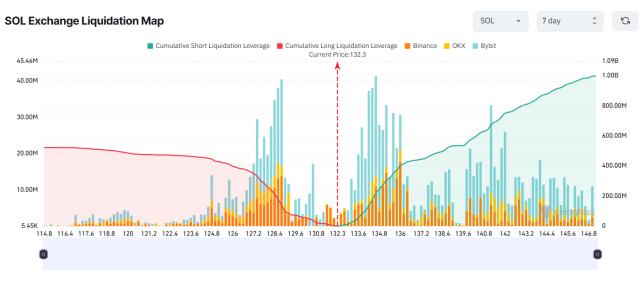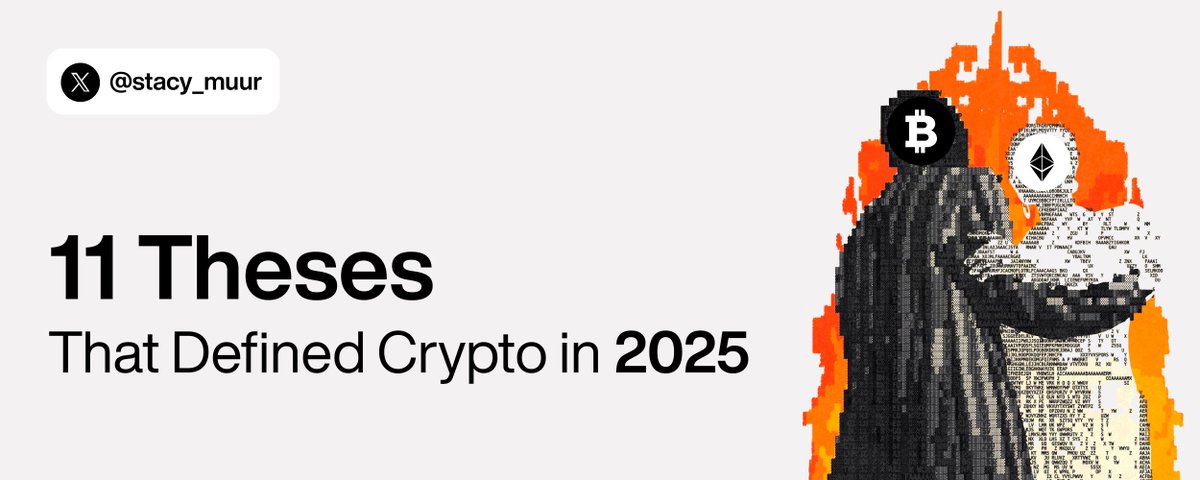
Article source: Between the Lines
At the beginning of this month (July), some friends were still asking me: Does ETH still have hope to break $3,500 this year? As a result, in less than two weeks, we have already seen Ethereum at $3,600.
Looking back at the bull market of the past two years, for many ETH holders, the process has been quite torturous. They not only had to face ETH's inability to break through its historical high, but also had to deal with the impact of people's FUD.
To be honest, Ethereum's breakthrough and rise in these two weeks also surprised me. According to my original expectation (guess), it might have taken until the end of the third quarter or the fourth quarter to see some new opportunities. However, the current result is still a very good thing for my (position), and I'm happy to see ETH rise beyond my expectations.
These days, I've noticed that the mood in some groups seems to have improved compared to before, and many E-guards seem to be excited again. But at the same time, a new question arises: What is driving ETH's rise in this stage? How long can this upward momentum continue?
People tend to find reasons to convince themselves when prices rise, and similarly when prices fall - this seems to be the norm for many. Some bloggers also like to catch these hot topics, switching to bearish views when prices drop and bullish views when prices rise, as this better matches people's reading preferences.
However, summarizing reasons after each rise is somewhat like being a Monday morning quarterback. Let's discuss this in two parts:
First, let's briefly review our perspectives on Ethereum since the beginning of the year, which is also a witness to the emotional fluctuations.
[The rest of the translation follows the same professional and accurate approach, maintaining the original structure and meaning while translating to English.]Therefore, we need to be more specific. For the current stage of growth, a direct summary would be that institutional interest in ETH is currently surging, as many people (institutions) were amazed but missed out on BTC's past performance. Recently, with the passage of some cryptocurrency-related bills in the United States, ETH, currently the only project besides Bitcoin to have an ETF, seems to be becoming a new focus of attention.
For example, in terms of ETH ETF fund inflows/outflows, the daily inflow on a few days ago (7.16) set a new historical record, reaching $727 million, as shown in the following image.
Moreover, in terms of ETH balance on exchanges, according to on-chain data, the ETH balance on exchanges has dramatically decreased in the past 30 days, reaching a new low level. As shown in the following image. The reduction in exchange supply is usually viewed as a bullish signal, as it theoretically means a decrease in the number of tokens ready to be sold.
In short, with some institutions recently beginning to actively buy ETH, leading to a change in stage-specific market demand, this seems to have become the main driving factor for ETH's rapid rise in this stage.
So, how long can ETH's current upward momentum continue?
As we mentioned earlier, price is often determined by multiple factors. For Ethereum, as the only project besides Bitcoin to have an ETF, the largest crypto base ecosystem project, the king of Altcoins, and the current best choice for RWA narrative... these are all factors influencing ETH's price changes.
Here, we might as well first exclude other price influencing factors and simply reference the situation of MicroStrategy with Bitcoin:
In terms of mimicking MicroStrategy's approach, the Nasdaq-listed company SharpLink Gaming has recently become a highly watched star institution. Since announcing ETH as its primary financial reserve asset in May this year, its stock (SBET) has risen by over 25 times, from $3 to a high of $79.
As of the time of writing, SharpLink Gaming has accumulated ETH worth over $990 million (the institution purchased ETH worth approximately $213 million in just one week from July 7 to July 13), not including ETH purchased by other TradFi investors through spot ETH ETF. And according to the institution, they do not plan to stop this behavior soon and will continue to buy more ETH. As shown in the following image.
It can be foreseen that as more institutions like SharpLink Gaming continue to buy ETH, this will likely continue to create more buying pressure.
As for whether institutions might encounter problems with this approach, what problems might arise, and when - we have discussed specific methods in previous articles (such as the February 10th and February 28th articles) regarding MicroStrategy. Interested friends can search and review historical articles for reference.
To summarize briefly: as long as the stock trading price of companies like SharpLink Gaming remains higher than the value of their ETH holdings, they can continue to play out this strategy.
While I can't predict long-term outcomes, in the medium to short term, strategies like MicroStrategy with Bitcoin and SharpLink Gaming with Ethereum will generally benefit BTC and ETH prices, because the highest-level price play is actually about forming bubbles, and what a big bull market needs most is more bubbles. MicroStrategy has accumulated over $71 billion worth of Bitcoin with this genius approach, and we have witnessed Bitcoin continuously breaking historical highs. If no new black swan events occur in the macro environment, ETH and some Altcoins will likely continue to rise.
Of course, since it's a bubble, there will ultimately be a day of bursting, and the process from bubble formation to final burst is often accompanied by repeated scripts. It's not like buying today means getting rich tomorrow, just as Bitcoin has risen from $15,000 to $120,000 in this cycle, but this upward process was not smooth. Therefore, we need to strictly adhere to our position management plan, just as we discussed in the previous article (7.15): a bull market is a great retreat.
Investment/speculation can be summarized as grasping the bubble cycle: embracing the bubble, enjoying the bubble, staying away from the bubble, and continuing to look forward to the formation of a new bubble.
According to our previous article expectations, there might be another opportunity to enjoy a larger bubble before the end of this year. Before formally staying away from the bubble, we need to focus on these two major aspects:
1) Macro and economic aspects
This year, we are mainly focusing on the Federal Reserve's interest rate cuts and changes in the U.S. Dollar Index (DXY), both of which will significantly impact risk assets.
Based on current market expectations, the Federal Reserve might cut rates twice this year, and the timing of these cuts has become the current key catalyst. If the Federal Reserve cuts rates in September, based on past experience, the market (smart money) usually starts digesting rate cut expectations 3-6 months in advance. Theoretically, the rise since April seems reasonable, and July might also mean that some Altcoins will or are already entering an acceleration mode.
2) Regulatory and institutional aspects
Here, we are mainly focusing on two things: cryptocurrency/crypto market bills and ETFs and institutional capital.
For example, we previously mentioned the GENIUS bill, which will long-term promote mainstream stablecoin adoption. Not only will major institutions launch stablecoin-related businesses, but more users (in USD) can also more conveniently participate in DeFi services.
Take the ETF issue: with the approval of Bitcoin and Ethereum spot ETFs, the ETF route for other top Altcoins seems to be becoming clearer. Based on past situations, the fourth quarter of this year (around October) might become a historical turning point for crypto ETFs, as we mentioned in previous articles. More Altcoin ETFs might be approved, which will inevitably bring more external liquidity.
Although this crypto bull market continues to follow some historical and cyclical patterns, it also has many structural changes, such as different speculative attributes of retail investors, different market driving forces (increasing institutional participation), different liquidity risk (external liquidity from ETFs), different narrative sustainability (more narratives, shorter sector rotations)... and so on.
In the past, getting rich in the crypto field seemed like a simple thing, sometimes you could make money by buying blindly. Now, making money is becoming increasingly difficult. We not only need to study various changes within the crypto field but also simultaneously pay attention to macro, economic, political, and U.S. stock market changes.
While many crypto indicators are still meaningful and valuable, we also need to start learning to change some existing concepts. For example, regarding the "Altcoin season" issue, many people often use BTC.D (Bitcoin dominance) as an important reference indicator. However, we now need to understand that the decline of BTC.D is a result, not a cause.
The narrative of the future crypto market will be driven more by institutional adoption, stablecoin development, tokenization processes (such as RWA)... and other external liquidity capital, meaning that the demand in the crypto market is undergoing some fundamental changes. Especially for crypto veterans or crypto natives who have always strictly followed historical experience, many issues that seem problematic now may actually indicate that crypto is moving towards a new maturity, and we need to recognize this early.
Let's discuss these topics today. The sources of images/data mentioned in the text have been supplemented in the Notion, and the above content is just a personal perspective and analysis, solely for learning and communication purposes, and does not constitute any investment advice.
Article source: https://mp.weixin.qq.com/s/1ASSL9NOz7F8o00N7QdsjA






